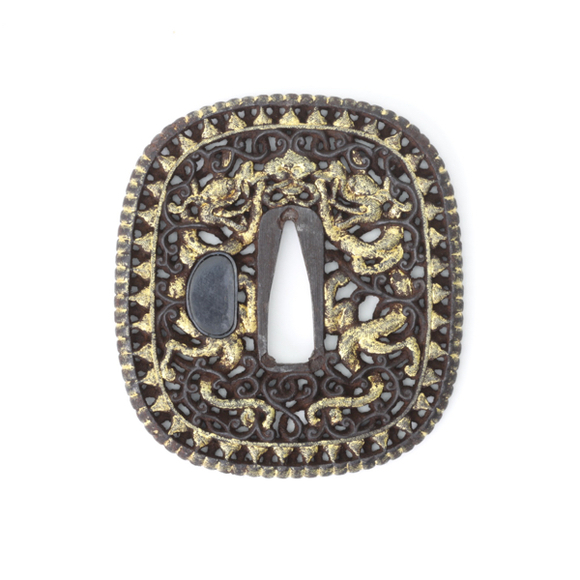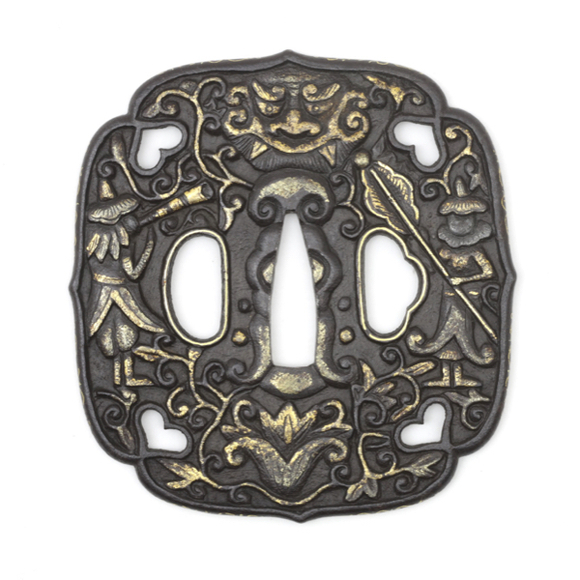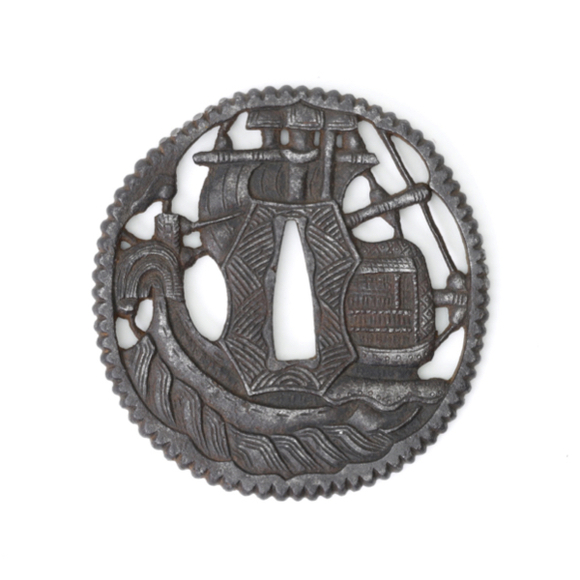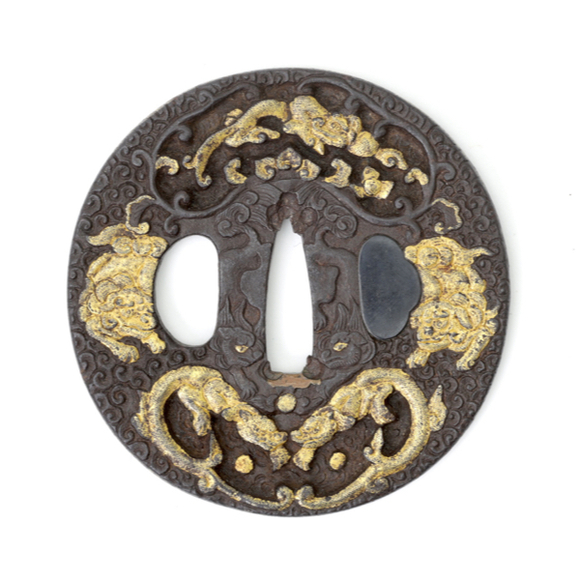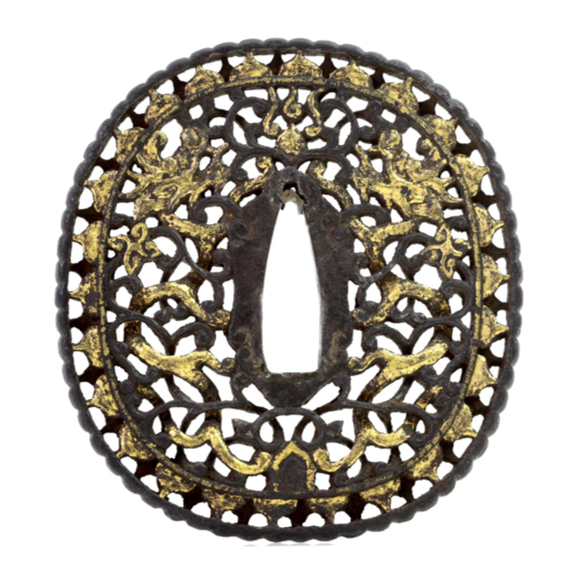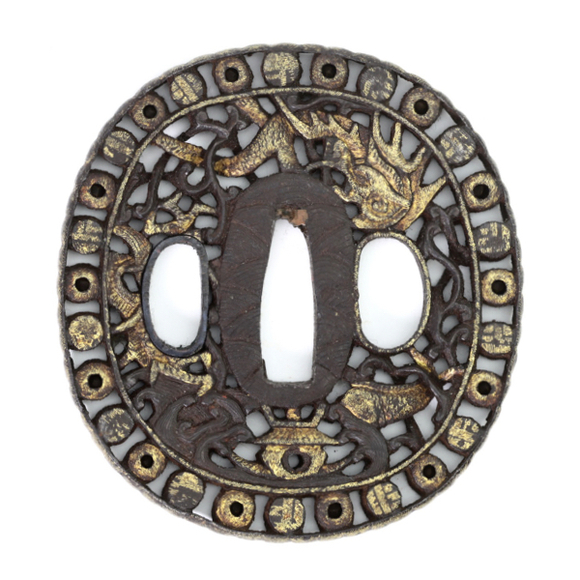Of pierced iron, elaborately cut with lotus petal border.

72 x 69 x 5.5 mm
95 grams
Iron, gold, copper
Canton, China
For the Japanese market
Circa 1750-1800
Description
This Chinese export sword guard is made with the Japanese market in mind, as exemplified by the hitsu-ana (opening for a kogai or kozuka) incorporated into the design.
The center plate has flat sides and a pointed top and bottom, both sides once with silver overlay over fine two-directional cross-hatching. Around it is openwork in a style that is probably attributable to Canton. It has ten areas of undercutting. It shows a dragon on either side, one facing up and the other facing down.
It has a double rim between which are triangular shapes, these are stylized lotus petals as also seen on the base of Buddhist and Hindu statues. The outer rim is ribbed, rather than beaded. The double lotus petal rim is a design feature that was very popular on Qing imperial sword mounts of the late 16th to early 18th century. Such sword parts were among the first openwork items exported to Japan, which gave rise to the entire genre of these Nanban tsuba.
Probably Canton, the second half of the 18th century. Based on earlier Qing designs.
The copper insert and punch marks indicate it has been mounted in Japan.


Unusual tsuba with foreign figures and Chinese auspicious symbols.
In the style of northern work of the 16th and 17th centuries
Canton work for the Japanese market, with 28 metal balls in separate compartments.

